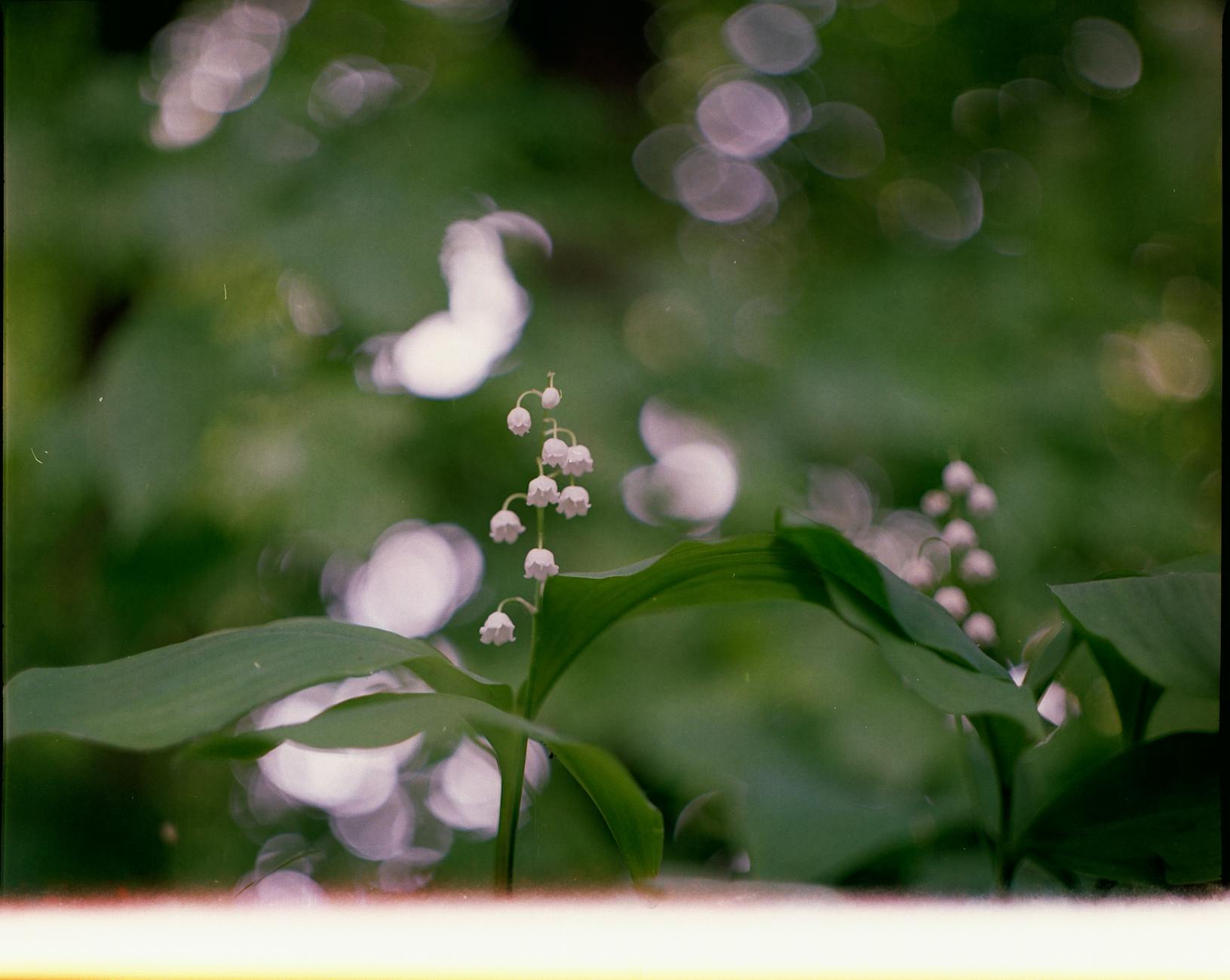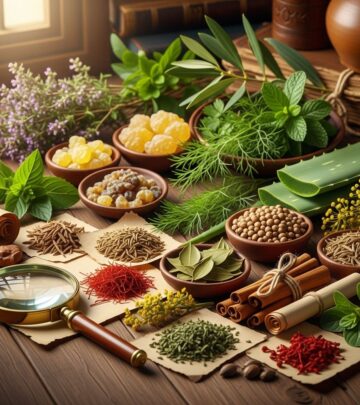Lily Of The Valley Meaning & Symbolism: Purity, Joy And Renewal
Discover the rich history, meaning, and symbolism of Lily of the Valley, the royal flower

Lily of the Valley: Origin and Botanical Profile
The Lily of the Valley, scientifically known as Convallaria majalis, is a perennial woodland plant native to Europe and parts of northern Asia. This delicate flower is recognized for its bell-shaped, white blossoms hanging gracefully from slender stems, typically reaching heights between 6 to 12 inches. Despite its gentle appearance, Lily of the Valley is closely related to asparagus but, notably, is not edible and can be highly toxic if ingested.
Thriving in cool climates, Lily of the Valley prefers shaded woodland environments and does not fare well in prolonged warm weather, often withering if temperatures remain too high. Its blooming period is brief but enchanting, lasting only 3 to 4 weeks in late spring. Although native to Europe and Asia, it has become an invasive species in North America, often spreading quickly in gardens and wild landscapes.
The Meaning and Symbolism of Lily of the Valley
Lily of the Valley has a long and storied history filled with symbolism and meaning that has evolved over centuries. Its value extends beyond its obvious beauty, touching on themes of love, purity, rebirth, and even luck.
Victorian Era: Return to Happiness
During the Victorian era, the language of flowers—known as floriography—was a popular means of non-verbal communication. In this context, Lily of the Valley was often given as a gift to symbolize a “return to happiness” or the rekindling of joy between individuals.
Ancient Mythology: Humility and Purity
Lily of the Valley’s association with purity and humility stretches back to antiquity. In Germanic mythology, it was linked to Ostara, the goddess of spring, whose name is the root of the modern word “Easter.” This connection reinforced the flower’s status as a herald of spring and new beginnings.
Greek mythology also features Lily of the Valley in the legend of Apollo. It is said that Apollo created these blooms to provide a soft carpet for his nine Muses, protecting their delicate feet as they walked through the forest. Consequently, Lily of the Valley also symbolizes kindness and delicacy.
Christian Symbolism: Motherhood and Redemption
In Christian tradition, Lily of the Valley is frequently associated with the Virgin Mary and is sometimes called “Our Lady’s Tears.” According to Christian lore, these flowers blossomed where the Virgin Mary’s tears fell at the crucifixion of her son, Jesus. This story elevates the flower’s sacredness and imbues it with meanings of purity, humility, and redemption. The flower is often referenced in religious art and is said to symbolize the purifying and redemptive grace of Christ, as described in Song of Solomon 2:1, where it is used as a metaphor for spiritual purity and renewal.
Lily of the Valley in Royalty and Culture
Lily of the Valley holds a special place in royal traditions. The flower has been closely associated with royalty, especially in Europe, and has been featured in royal wedding bouquets and other ceremonial events. Its association with spring and new beginnings makes it a fitting symbol for hope and renewal, qualities that resonate deeply with the symbolism of monarchy and lineage.
Notably, Lily of the Valley has been a favorite of many royal brides. For example, it has been featured in several British royal weddings, reinforcing its status as a flower of elegance, purity, and new beginnings. This royal connection has helped cement its reputation as a symbol of good luck and prosperity.
Birth Month and Cultural Celebrations
May Birth Flower
Lily of the Valley is designated as the official flower of May, earning it the alternative names “May lily” and “May bells.” As such, it is a popular choice for May Day celebrations and spring festivals, symbolizing the joy and renewal associated with the arrival of warmer weather.
May Day Traditions
In France, Lily of the Valley holds special significance on May 1st, known as “La Fête du Muguet.” It is customary to gift these flowers as tokens of good luck and happiness for the coming year. This tradition is rooted in the belief that the flower brings prosperity and wards off misfortune, making it a cherished part of French springtime celebrations.
Folklore from various cultures also suggests that whoever finds the first Lily of the Valley bloom of the season is destined for a year filled with good fortune and happiness.
Lily of the Valley in Weddings and Special Events
Lily of the Valley is a perennial favorite in wedding bouquets and arrangements, prized for its delicate fragrance and symbolic meanings of purity, humility, and joy. Its use in Victorian-era weddings was particularly notable, where brides carried bouquets to signify chastity and a fortified union. The flower’s presence at weddings is thought to herald protection, joy, and the promise of new beginnings.
Toxicity and Care Considerations
Despite its beauty and rich symbolism, Lily of the Valley is a highly toxic plant. Every part of the plant, including the flowers, leaves, and berries, contains potent cardiac glycosides that can cause serious health issues if ingested. Symptoms of poisoning include pain, vomiting, and skin irritation. For this reason, it is crucial to handle the plant with care, especially around children and pets.
Below is a quick reference table summarizing the key facts about Lily of the Valley:
| Feature | Details |
|---|---|
| Scientific Name | Convallaria majalis |
| Native Region | Europe, northern Asia |
| Height | 6–12 inches |
| Blooming Period | Late spring (3–4 weeks) |
| Symbolism | Purity, humility, joy, motherhood, good luck |
| Toxicity | Highly toxic if ingested |
Frequently Asked Questions (FAQs)
Q: What does Lily of the Valley symbolize?
A: Lily of the Valley symbolizes purity, humility, joy, motherhood, and good luck. In Christian tradition, it is also associated with the Virgin Mary and redemption.
Q: Is Lily of the Valley poisonous?
A: Yes, Lily of the Valley is highly toxic and can cause serious health issues if ingested. All parts of the plant are poisonous.
Q: When is Lily of the Valley in season?
A: Lily of the Valley blooms in late spring, typically for 3 to 4 weeks, and is the official flower of May.
Q: Why is Lily of the Valley associated with royalty?
A: The flower’s symbolism of purity and renewal, along with its delicate beauty, has made it a favorite in royal weddings and ceremonies, linking it to elegance and prestige.
Q: How is Lily of the Valley used in weddings?
A: Lily of the Valley is commonly used in wedding bouquets and arrangements because of its delicate appearance and symbolic meanings of purity, happiness, and strong unions.
Cultural Significance Across the Globe
Lily of the Valley’s significance extends beyond Europe and Christianity. In Romanian folklore, for example, it is said that the flower grew where an orphaned girl cried on her parents’ graves, making it a symbol of tears and remembrance. In German tradition, it is associated with humility and the goddess Ostara, reinforcing its themes of purity and new beginnings.
Conclusion
Lily of the Valley is much more than a charming spring flower. Its rich history, deep symbolism, and cultural significance make it a beloved symbol of purity, humility, joy, and renewal. From ancient mythologies to royal traditions and heartfelt wedding bouquets, this delicate bloom continues to inspire and enchant people around the world. Always remember, however, that its beauty is matched by its toxicity—handle with care and admiration.
Quick Facts at a Glance
- Scientific Name: Convallaria majalis
- Symbolism: Purity, humility, joy, motherhood, good luck
- Blooming Season: Late spring (May)
- Height: 6–12 inches
- Toxicity: Highly toxic if ingested
- Native Region: Europe, northern Asia
- Featured in: Royal weddings, Christian art, May Day celebrations
Fun Fact
Did you know that finding the first Lily of the Valley in spring is considered a sign of good luck and fortune for the year? This charming tradition is still celebrated in many cultures today, highlighting the flower’s enduring appeal and magical allure.
References
- https://www.countryliving.com/gardening/a41229643/lily-of-the-valley-meaning-symbolism/
- https://www.lovingly.com/flower-meanings/lily-of-the-valley
- https://extension.psu.edu/programs/master-gardener/counties/luzerne/news/may-birth-flower-lily-of-the-valley
- https://thursd.com/articles/lily-of-the-valley-cultural-significance
- https://www.lotusfun.com/blogs/lotusfun/lily-flower-meaning-symbolism-and-uses
Read full bio of medha deb











